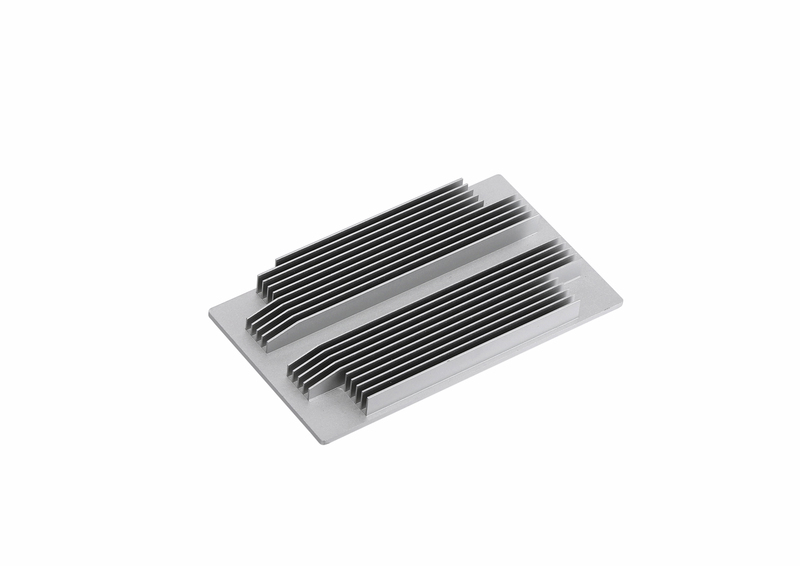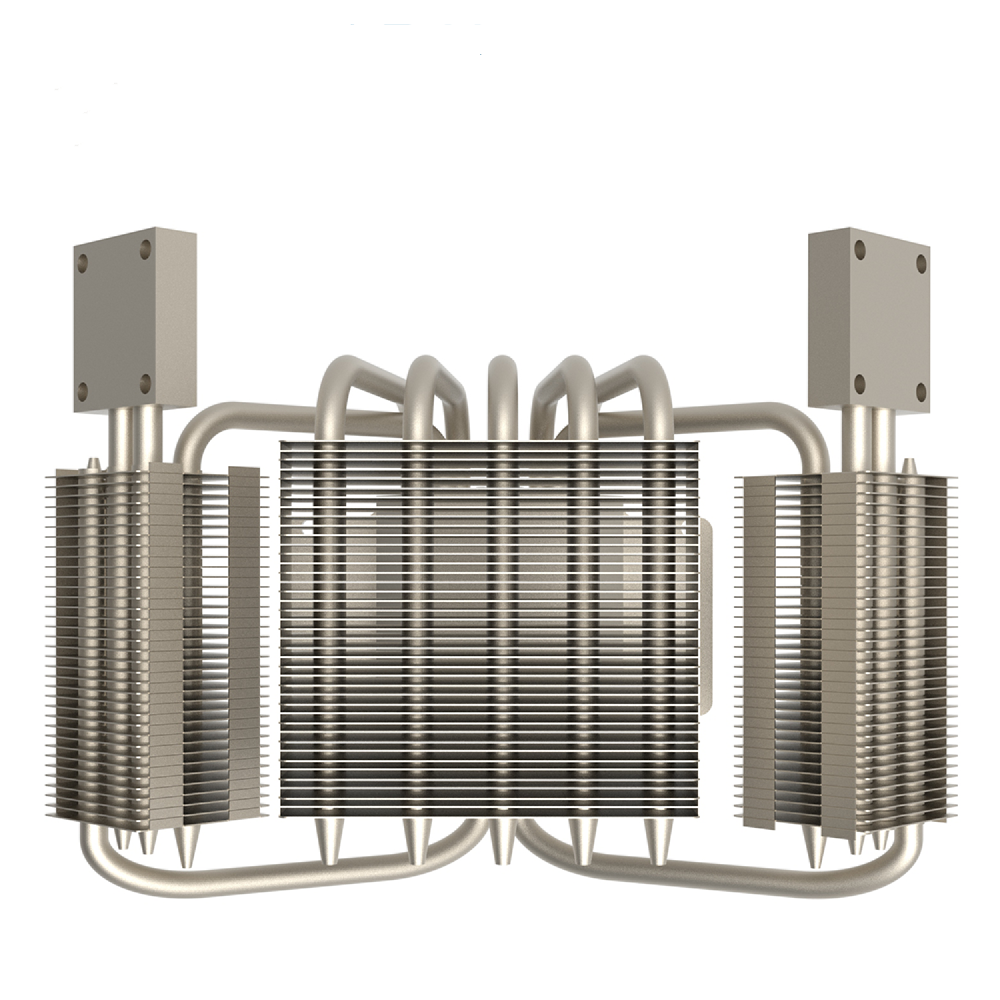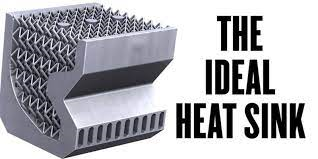Introduction
Are you struggling to keep your compact electronics cool without sacrificing their miniaturization? Heat management is a critical factor in the performance and longevity of these devices. In my blog, “Heat Sink Selection for Compact Electronics: Miniaturization without Compromising Cooling,” I will guide you through the intricacies of selecting the right heat sink. We’ll explore the challenges of miniaturization, the importance of efficient heat dissipation, and factors influencing heat sink selection. From active to passive solutions, material considerations to advanced cooling techniques, this blog will equip you with the knowledge to optimize cooling while maintaining the compactness of your electronics.

Importance of Heat Sinks in Compact Electronics
Do you know that heat sinks play a vital role in the performance and reliability of your compact electronic devices? Let’s dive into the importance of heat sinks and how they contribute to efficient thermal management.
Explanation of Heat Generation in Compact Electronic Devices
Compact electronic devices generate heat during operation due to various factors such as power consumption, component inefficiencies, and high-frequency operations. These devices’ confined space and small form factor make heat dissipation challenging.
Consequences of Inadequate Heat Dissipation
Inadequate heat dissipation can lead to severe consequences. Excessive heat buildup can cause components to operate at higher temperatures, reducing their efficiency and lifespan. It can also result in thermal throttling, where the device slows down to prevent overheating, impacting its performance. Overheating can lead to component failure, system instability, and even safety hazards in extreme cases.
Role of Heat Sinks in Improving Thermal Management
Heat sinks are specifically designed to address these challenges by improving thermal management. They are responsible for efficiently transferring heat away from heat-generating components to the surrounding environment. Heat sinks provide a larger surface area that facilitates heat dissipation through conduction, convection, and radiation. By effectively removing heat, they help maintain optimal operating temperatures and prevent thermal-related issues in compact electronic devices.
Factors Influencing Heat Sink Selection
Several factors come into play when selecting the right heat sink for your compact electronic device. Understanding these factors will help you make an informed decision. Let’s explore the key considerations that influence heat sink selection.
Thermal Requirements and Power Dissipation of the Electronic Component
The thermal requirements and power dissipation of the electronic component are crucial factors. Determine the maximum allowable temperature for the component and the amount of heat it generates. This information will guide you in selecting a heat sink with the appropriate thermal capacity to dissipate the heat effectively.
Space Constraints and Form Factor Considerations
Space constraints and form factor considerations are vital, given the compact nature of your electronics. Measure the available space and consider the dimensions and design of the heat sink to ensure it fits within the device without obstructing other components or impeding airflow.
Thermal Resistance and Thermal Conductivity of Heat Sink Materials
Heat sink materials’ thermal resistance and thermal conductivity greatly impact heat dissipation. Materials like aluminium and copper are commonly used for their excellent thermal properties. Consider different materials’ thermal resistance and conductivity values to select the most suitable one for your application.
Available Cooling Methods and Airflow Restrictions
Consider the available cooling methods and any airflow restrictions within the device. Determine whether active cooling (such as fans) or passive cooling (such as natural convection) is feasible. Evaluate the airflow patterns within the device and ensure that the heat sink design allows for effective heat transfer and airflow circulation.

Types of Heat Sinks for Compact Electronics
Regarding heat sinks for compact electronics, there are several types to choose from, each with its advantages and considerations. Let’s explore the main types of heat sinks suitable for compact electronics.
Active Heat Sinks: Fan-Based Solutions
Active heat sinks are fan-based solutions that utilize airflow to enhance heat dissipation. Different fan types, such as axial fans or centrifugal fans, can be used depending on the specific requirements of your device.
Consider noise level, power consumption, and airflow direction when selecting the appropriate fan for your compact electronics. Proper fan placement and optimizing airflow within the device are crucial for efficient cooling.
Passive Heat Sinks: Fin-Based Solutions
Passive heat sinks rely on fin-based designs to dissipate heat through natural convection. Straight fins, pin fins, or other variations can be used depending on the space constraints and airflow characteristics. The fin spacing and height selection are important as it determines the surface area available for heat transfer and the ability to promote convection. Balancing these factors is crucial to achieving optimal cooling efficiency.
Hybrid Heat Sinks: Combining Active and Passive Cooling Methods
Hybrid heat sinks combine active and passive cooling to maximize heat dissipation. These solutions can leverage the benefits of fans for increased airflow while still utilizing the thermal conductivity of fin-based designs. Hybrid heat sinks offer a balance between performance and noise levels. However, challenges such as space constraints and integration complexity should be considered.

Material Selection for Heat Sinks
Choosing the right material for your heat sink is essential to ensure efficient heat dissipation in compact electronics. Let’s explore the key considerations regarding material selection for heat sinks.
Common Heat Sink Materials and Their Thermal Properties
Common heat sink materials like aluminium, copper, and alloys offer different thermal properties. Aluminium is lightweight, cost-effective, and has good thermal conductivity. On the other hand, copper has higher thermal conductivity but is heavier and more expensive. Other materials like graphite and ceramics are also used in specialized applications due to their unique thermal properties.
Comparative Analysis of Materials (Aluminum, Copper, Etc.)
A comparative materials analysis is crucial to determine the most suitable option for your heat sink. Consider factors such as thermal conductivity, density, cost, availability, and compatibility with the manufacturing process. Evaluate the trade-offs between performance and practical considerations to make an informed decision.
Considerations for Material Compatibility With Electronic Components
Compatibility with electronic components is another vital aspect. Ensure that the chosen material is electrically non-conductive and does not cause galvanic corrosion or adverse reactions with the components. Consider the material’s coefficient of thermal expansion (CTE) to minimize thermal stress on the electronic components during temperature fluctuations.
Advanced Cooling Techniques for Compact Electronics
Regarding advanced cooling techniques for compact electronics, there are two notable methods worth exploring: vapour chamber cooling and heat pipes. Let’s dive into these techniques and their benefits.
Vapor Chamber Cooling
Vapor Chamber Cooling utilizes a sealed chamber containing a working fluid that vaporizes and condenses to transfer heat effectively. This technology spreads heat evenly across the chamber’s surface, maximizing heat dissipation.
Vapour chamber cooling offers high thermal conductivity and excellent heat spreading capabilities, making it suitable for compact electronic devices with concentrated heat sources. However, it may have cost, weight, and integration complexity limitations.
Heat Pipes
Heat Pipes are another popular cooling method. These sealed copper or aluminium pipes contain a working fluid that evaporates at the hot end and condenses at the cold end, transferring heat through a phase change. Heat pipes efficiently transport heat over longer distances and can be integrated with heat sinks to enhance cooling performance.
They offer high thermal conductivity and low thermal resistance and are relatively lightweight. Integrating heat pipes with heat sinks can improve compact electronics’ overall heat dissipation capability.
Optimization Strategies for Compact Electronics Cooling
To optimize the cooling of your compact electronics, it is important to implement effective strategies that enhance heat transfer and dissipate heat efficiently. Consider the following optimization strategies.
Design Considerations for Effective Heat Transfer
Design considerations play a crucial role in facilitating effective heat transfer. Ensure proper placement and orientation of heat sinks and components to promote airflow and minimize thermal resistance. Optimizing the thermal path and ensuring adequate surface contact between the heat sink and the component is essential.
Thermal Interface Materials (Tims) And Their Role in Heat Dissipation
Thermal Interface Materials (TIMs) are crucial for maximizing heat transfer between the heat sink and the electronic component. Selecting the right TIMs, such as thermal greases, pads, or phase-change materials, ensures optimal thermal conductivity and minimizes thermal barriers.
Simulation and Modelling Techniques for Heat Sink Selection and Optimization
Simulation and modelling techniques can aid in heat sink selection and optimization. Utilize thermal analysis software and tools to simulate and predict heat transfer performance. This allows you to evaluate different heat sink designs, materials, and configurations before implementation.
Case Studies and Examples
Real-World Examples of Heat Sink Selection in Compact Electronics
Real-world examples of heat sink selection in compact electronics include smartphones utilizing vapour chamber cooling, automotive ECUs using aluminium-finned heat sinks, LED lights incorporating compact heat sinks, and industrial automation devices employing heat sinks to cool electronic modules efficiently.
Analysis of Successful Heat Sink Implementations
Successful heat sink implementations are analysed by studying case studies and examining factors that contributed to their effectiveness. This includes evaluating heat sink designs, materials, and integration techniques. By understanding these implementations, we can gain insights into what works well in specific scenarios and apply them to our heat sink selection process.
Lessons Learned and Best Practices for Heat Sink Selection
Lessons learned from successful heat sink implementations and best practices for selection can guide us in making informed decisions. These lessons may include considering thermal requirements, understanding the importance of proper airflow and thermal management. These lesson also include selecting suitable materials based on thermal conductivity and compatibility, and optimizing the design for efficient heat dissipation.

Conclusion
Selecting the right heat sink is crucial for maintaining optimal performance and preventing overheating in compact electronics. You can effectively manage heat without compromising miniaturization by considering thermal requirements, space constraints, material properties, and advanced cooling techniques.
Incorporating lessons learned from successful implementations and following best practices will ensure efficient cooling and the longevity of your compact electronic devices.
